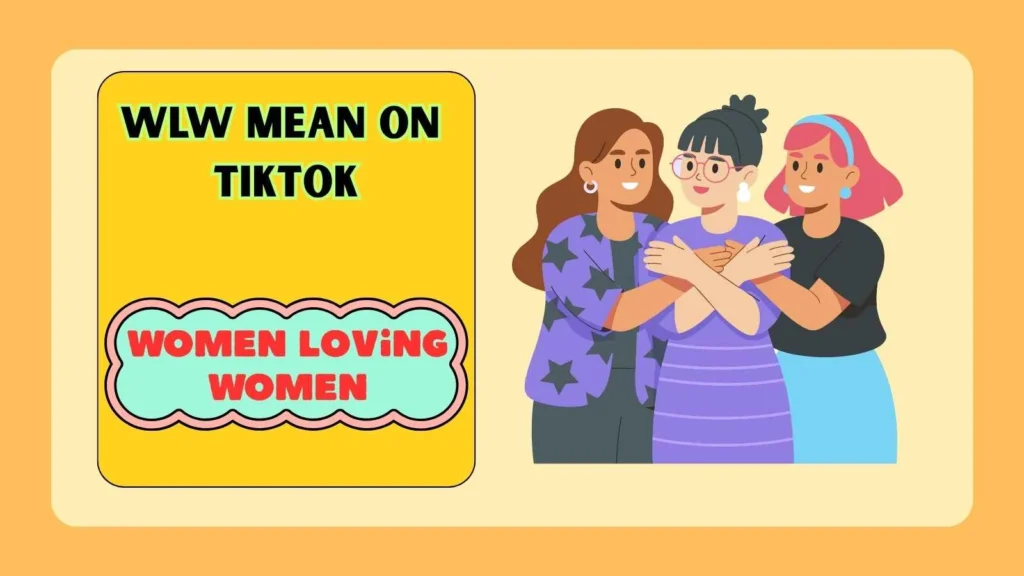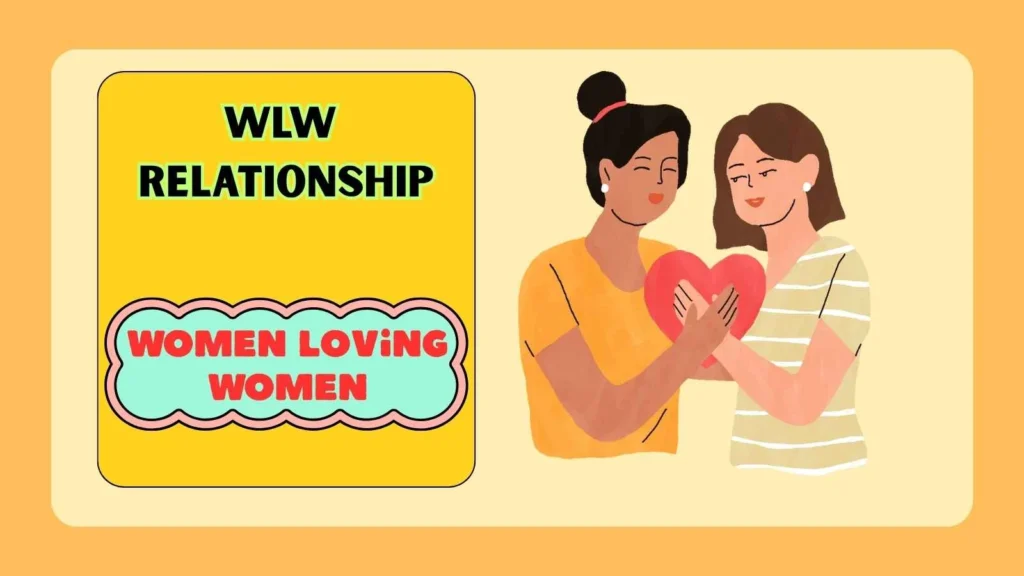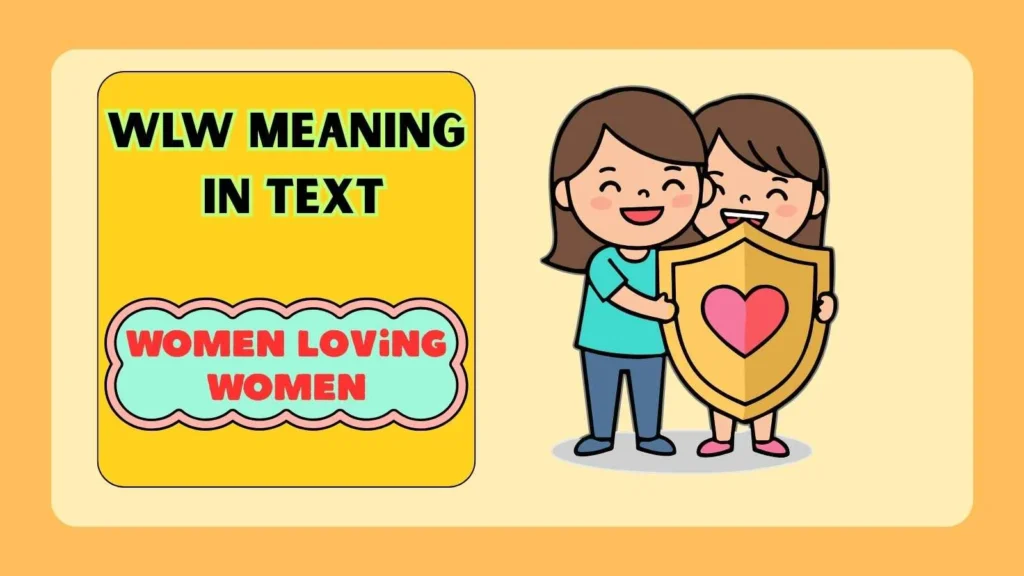Last updated on October 31st, 2025 at 08:50 pm
If you’ve ever seen the acronym WLW pop up in a text, tweet, or bio and wondered what it means, you’re not alone. With the ever-evolving world of internet slang, short forms like WLW often leave people curious. This expression has grown popular in online conversations, social media captions, and dating profiles.
Understanding what it means helps you connect better with modern digital culture, especially among Gen Z and LGBTQ+ communities. In this guide, we’ll break down what WLW stands for, how it’s used in different contexts, its background, and even how to respond when someone uses it.
Whether you’re here out of curiosity or want to stay updated with the latest slang, this article gives you a complete understanding of the meaning and usage of WLW in text.
Definition & Meaning
WLW stands for “Women Loving Women.” It’s an acronym used to describe women who are romantically or emotionally attracted to other women. The term includes lesbians, bisexual women, pansexual women, and anyone who identifies as a woman and experiences love, attraction, or affection toward other women.
WLW is not just a sexual orientation label—it’s also an inclusive way to describe emotional and romantic connections. People often use it to express identity, celebrate love, or find community online. For example, someone might write “wlw vibes only” in their bio or caption to signal their identity or interests in a positive, affirming way.
In short, WLW is a modern, inclusive term that embraces all forms of women-loving-women relationships and experiences, both romantic and platonic.
Background & History
The term WLW gained visibility through Tumblr and Twitter communities during the early 2010s. It evolved as a more inclusive and softer alternative to the word “lesbian,” which some felt didn’t represent the full spectrum of attraction among women.
Historically, women expressing love for other women has existed across centuries, but the internet gave the movement a global stage. Online platforms popularized phrases like WLW, MLM (Men Loving Men), and NBLW (Nonbinary Loving Women) to promote inclusivity and understanding of gender diversity.
As social media evolved, WLW became not only an identifier but a cultural expression. It embodies self-acceptance, pride, and belonging within a supportive online space. Today, the acronym stands as a universal symbol for female-female love and empowerment across digital communities.
Usage in Various Contexts
You’ll often see WLW appear in:
- Social media bios: “Proud WLW 🌈”
- Dating profiles: “Looking for WLW connections”
- Hashtags: #WLW, #WLWcouples, #WLWpride
- Memes and posts: To celebrate representation or share relatable moments
It’s also common in fanfiction, art, and movies where same-gender female relationships are central themes. However, WLW isn’t restricted to romantic use—it can also highlight emotional solidarity or admiration among women.
Essentially, it’s a way for people to express identity and connection without strict labels.
Common Misconceptions & Clarifications
- It doesn’t only mean lesbian. WLW includes bisexual, queer, and pansexual women as well.
- It’s not offensive. The term is widely accepted and positive within LGBTQ+ communities.
- It’s not new slang. It’s been around for over a decade, gaining steady visibility.
- It’s not exclusive to young people. Anyone identifying as or supporting women loving women can use it.
The key is context—if used respectfully, WLW is a term of identity and empowerment.
Similar Terms & Alternatives
Several related terms carry similar meanings:
- MLM (Men Loving Men): Men attracted to men.
- NBLW (Nonbinary Loving Women): Nonbinary individuals attracted to women.
- WLW/NBLW: Used when inclusivity is intended for both.
- Lesbian: A more traditional label, though some prefer WLW for its broader scope.
Each of these reflects diverse gender and orientation experiences, showing how modern language evolves to respect individual identity.
How to Respond to This Term
When someone uses WLW, the best response depends on context.
- If it’s in a bio or caption, acknowledge respectfully.
- If it’s part of a personal disclosure, respond with support—e.g., “That’s beautiful” or “Thanks for sharing.”
- Avoid intrusive questions about sexuality; keep it empathetic and friendly.
Showing understanding and respect fosters inclusivity and comfort in both online and offline spaces.
Regional or Cultural Differences
While WLW is globally recognized, its visibility varies:
- In Western countries, it’s widely used in LGBTQ+ communities and media.
- In Asian or Middle Eastern regions, it may appear less often due to cultural sensitivity.
- In global online spaces, WLW bridges cultural divides, allowing individuals to connect through shared identity and art.
This shows how digital language transcends borders while adapting to cultural norms.
Comparison with Similar Terms
WLW vs. Lesbian:
WLW is more inclusive; “lesbian” specifically refers to women exclusively attracted to women.
WLW vs. Queer:
“Queer” can describe a range of non-heterosexual identities, while WLW focuses specifically on women’s attraction to women.
WLW vs. Bi/Pan:
Bisexual and pansexual women can also identify as WLW since they may love women as part of a broader attraction spectrum.
Usage in Online Communities & Dating Apps
WLW thrives in online queer communities, especially on platforms like Tumblr, Reddit, TikTok, and X (Twitter). It’s also common in dating apps like Her, Bumble, or Tinder, where users use WLW to signal interest in women-loving-women connections.
Online, the tag #WLW creates a safe digital space for love, art, and identity, encouraging authenticity and acceptance among women worldwide.
Hidden or Offensive Meanings
WLW itself is not offensive and has no hidden vulgar meaning. However, misuse or jokes made in poor taste can make it inappropriate. Always use it with respect and awareness, as it represents a genuine aspect of someone’s identity.
Suitability for Professional Communication
In professional or corporate contexts, WLW should be used thoughtfully. It’s perfectly fine in diversity, inclusion, or identity-related discussions but may be unnecessary in formal business settings.
When sharing publicly, consider whether it’s relevant to the conversation. Respecting context maintains professionalism and understanding.
💖 What Does WLW Mean on TikTok?

- 🌈 WLW stands for “Women Loving Women,” a phrase celebrating queer women’s attraction.
- 🎥 On TikTok, it appears in bios, captions, and hashtags to show identity proudly.
- 💬 It helps creators connect with LGBTQ+ audiences and build safe spaces.
- 📈 Hashtags like #WLW, #Sapphic, and #LesbianTok boost discoverability.
- 💡 Many users add it to express solidarity or support for women-centered love.
- 🎶 TikTok trends often pair WLW content with romantic or soft-pop audios.
- 🔄 Because algorithms favor niche tags, WLW helps videos reach the right viewers.
- 🫶 It also educates others about gender, attraction, and inclusivity.
- 💭 Using WLW shows authenticity—it tells followers who you are without labels.
- ✨ Overall, WLW on TikTok fosters pride, community, and joyful representation.
💕 WLW Relationship

- 🌸 Refers to a romantic bond between two women, including lesbians or bisexual women.
- 💬 It focuses on love, trust, and mutual respect—just like any other relationship.
- 💡 Online, “WLW relationship” content offers visibility for same-sex couples.
- 📸 Couples share daily moments, advice, and relationship tips under #WLWRelationship.
- 🌈 It normalizes queer love stories, encouraging acceptance and empathy.
- 🫶 Many creators discuss challenges like coming out or family reactions.
- ⚡ It also highlights positive aspects—support, understanding, and equality.
- 💭 WLW relationships remind audiences that love transcends gender norms.
- 📚 They inspire representation in media, films, and books featuring sapphic couples.
- ✨ Overall, the term uplifts healthy, proud, and loving partnerships between women.
📱 What Does WLW Mean on Snapchat?
- 💬 On Snapchat, WLW keeps its meaning: Women Loving Women.
- 🌈 Users may include it in their Bitmoji bios or usernames to signal orientation.
- 📸 Friends often use WLW stickers or filters to celebrate pride and connection.
- 💡 Sending a “WLW” snap can express identity privately to trusted friends.
- 🔒 Because Snapchat messages disappear, it offers a safe space for self-expression.
- 🫶 WLW stories and group chats connect queer women in supportive circles.
- ⚡ The acronym also helps others find like-minded people organically.
- 💭 Some use WLW as a subtle cue for flirting or signaling interest.
- 📈 During Pride Month, WLW-related filters and hashtags trend widely.
- ✨ Overall, on Snapchat, WLW promotes authenticity, community, and pride.
FAQs
What does WLW mean in text?
It stands for “Women Loving Women,” describing women attracted to other women.
Is WLW the same as lesbian?
Not exactly; WLW is broader and includes bisexual and queer women too.
Is WLW a slang or identity term?
It’s both—a casual yet affirming way to describe female-female attraction.
Where is WLW used most?
Mostly on social media, dating apps, and online LGBTQ+ communities.
Can straight people use WLW?
They can mention it respectfully, but it mainly represents women attracted to women.
Is WLW offensive or rude?
No, it’s a positive and accepted term when used appropriately.
Conclusion:
WLW represents more than an acronym it’s a reflection of love, acceptance, and identity in the modern digital age. From social media bios to heartfelt connections, it celebrates the beauty of women loving women in all its forms.
By understanding its meaning, usage, and cultural nuances, you not only keep up with evolving internet language but also promote inclusivity and respect.
Whether you see it in text or a profile, now you know the true essence behind this empowering term.
